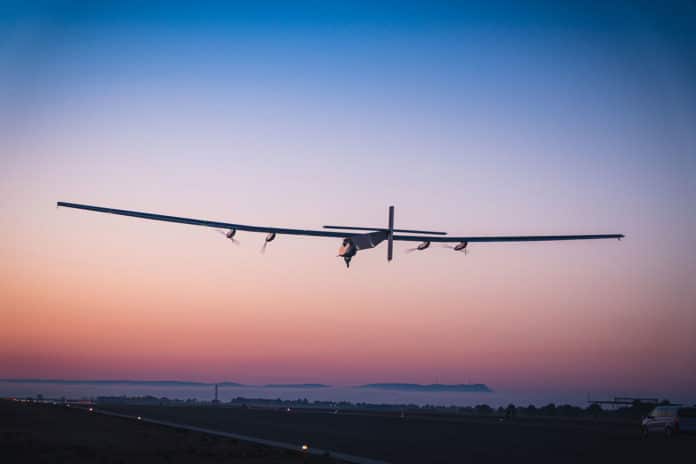The U.S. Navy is developing an uncrewed solar-powered plane that can remain airborne for 90 days at a time thanks to massive solar panels on each of its wings.
The aircraft, evocatively called Skydweller and built by a U.S.-Spanish aerospace firm Skydweller Aero, could help the Navy keep a watchful eye on the surrounding seas while escorting ships months at a time or act as a communications relay platform. The company was awarded a $5 million contract by the U.S. Navy to develop the aircraft.
The solar-powered plane adds new software and upgraded hardware to Solar Impulse 2, a piloted solar aircraft that flew around the world in 2015-16 but had to stop every five days. The company converted the design into the Skydweller by removing the pilot seat, which allows for a longer range and more space for hardware for autonomous abilities.
The Skydweller has a wingspan of 236-foot and is covered in 2,900 square feet (269.4188 meters) of photovoltaic cells that generate up to 2 kilowatts of power. Its makers also plan to fit the aircraft with hydrogen fuel cells as a backup to boost performance or serve as a backup in case of bad weather.
“We are currently following our plan to test autonomous flight, then autonomous takeoff, then autonomous landing, and finally our first fully autonomous flight,” Skydweller Aero CEO Robert Miller told New Scientist. “Once all this has been proven, we will move into long-endurance testing with the goal of operating for 90-plus days.“
The autonomous plane will cruise at speeds of up to 100 knots, fly as high as 45,931 feet above the surface, and hold up to 800 pounds (360 kg) of radar and camera equipment.
“For us, if you’re flying 90 days with one aircraft, that’s two takeoffs and landings versus… hundreds,” Skydweller Aero co-founder John Parkes told Aviation Today in June. “Being able to fly thousands of miles, persist over an area for 30-60 days and fly back is a differentiator. It’s a huge cost saving to the U.S. government when you look at the whole cost of doing a lot of the national security missions that we have.”
